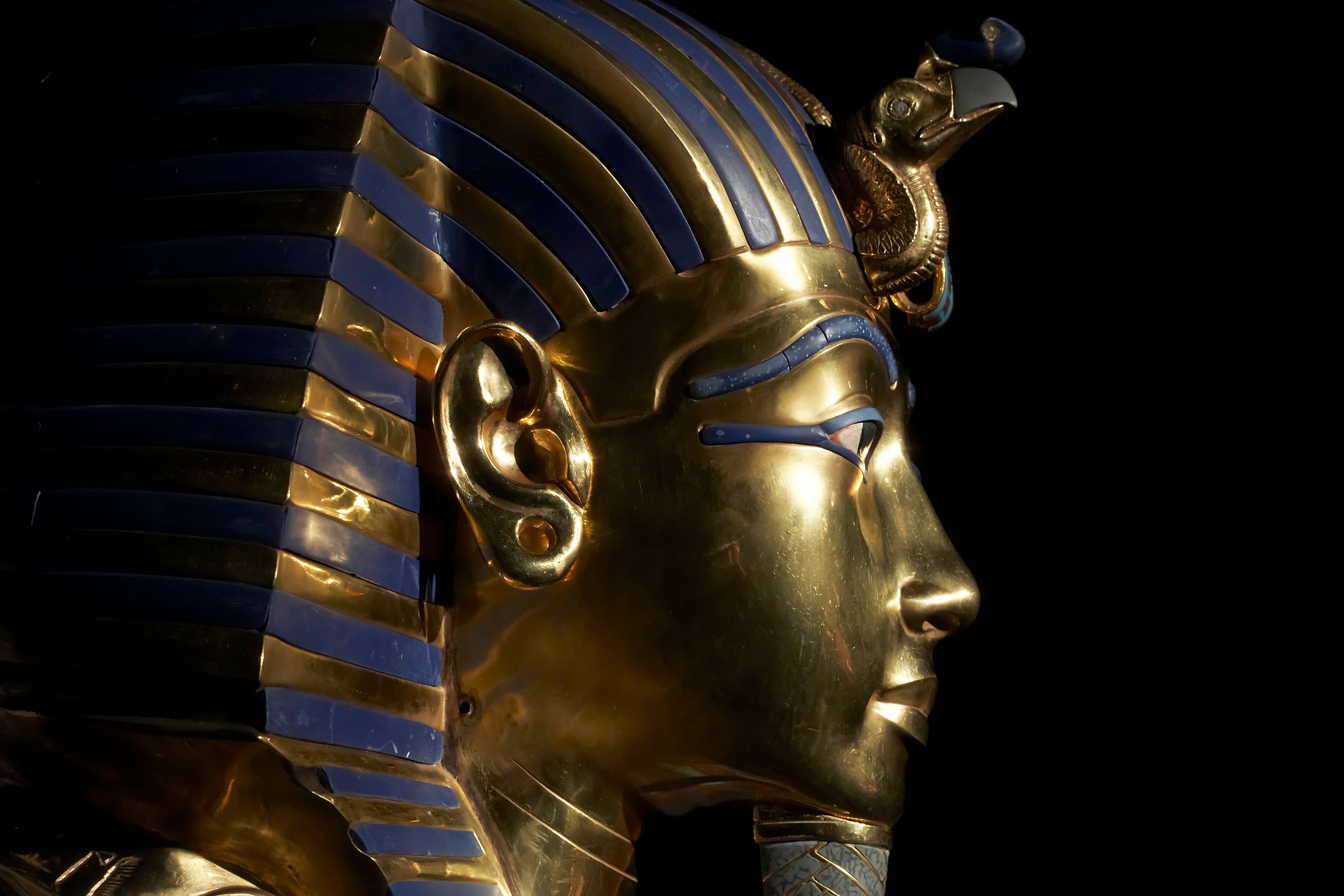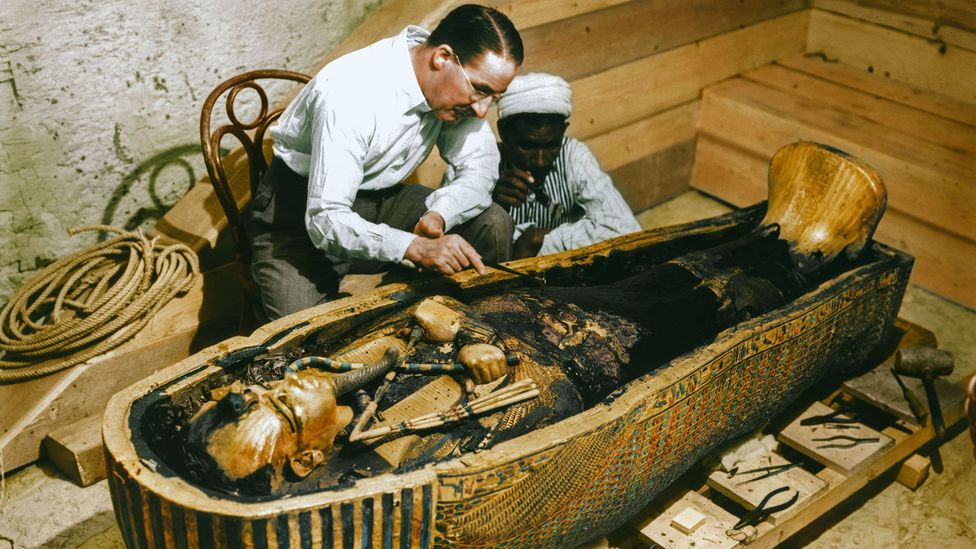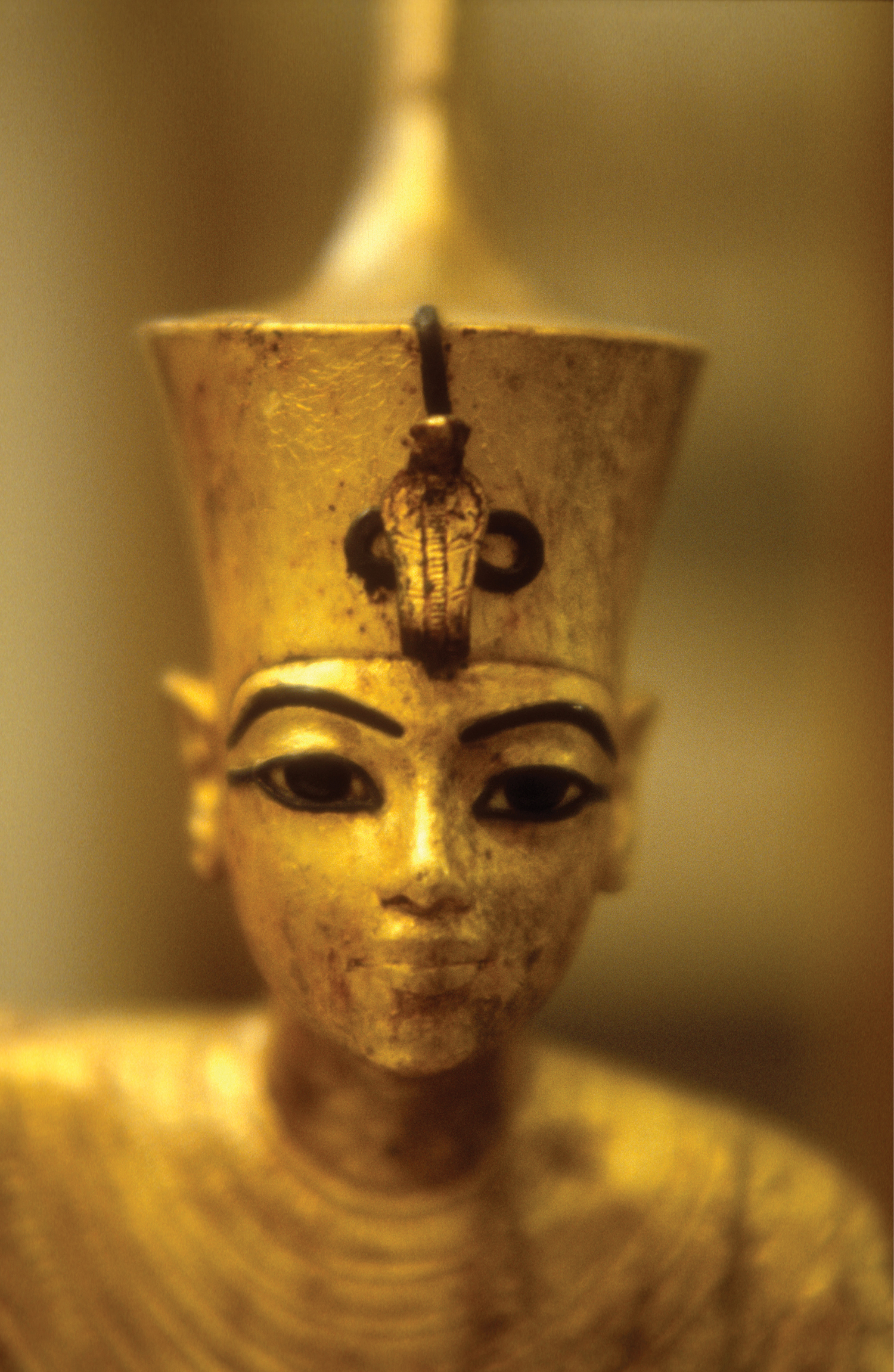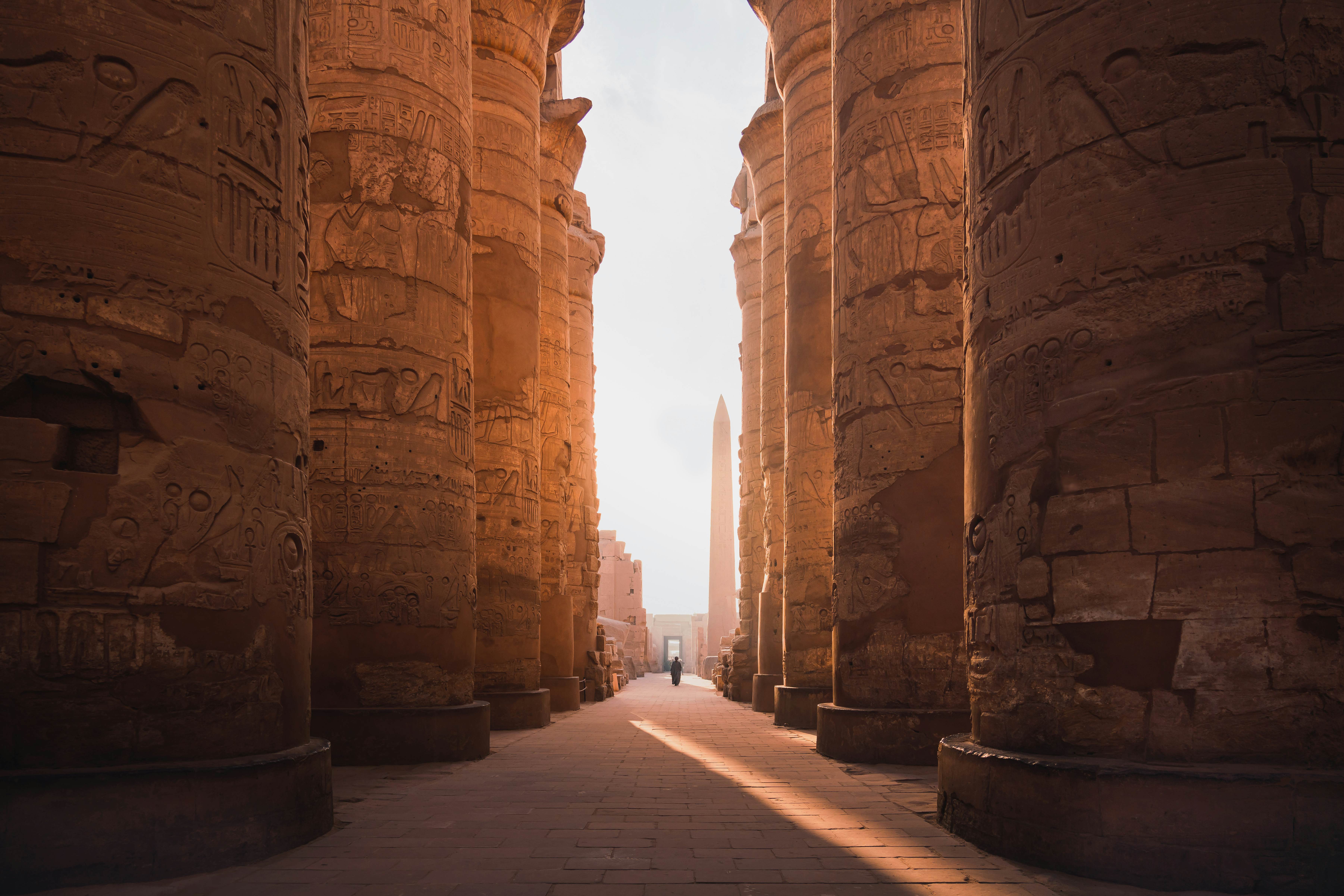Exploring the Life and Legacy of King Tutankhamun

King Tutankhamun, also known as the "Boy King," was an ancient Egyptian pharaoh who ruled during the 14th century BC. Although his reign was relatively short-lived, his tomb, discovered in 1922 by the archaeologist Howard Carter, captivated the world and provided valuable insights into the ancient Egyptian civilization.
A brief overview of King Tutankhamun's historical significance and the fascination around his life and reign
King Tutankhamun ascended to the throne at nine or ten and ruled for approximately nine years before his untimely death at eighteen or nineteen. Despite his short reign, King Tutankhamun is of great historical significance due to the intact state of his tomb, which contained a wealth of artefacts, including his iconic golden burial mask.
The discovery of King Tutankhamun's tomb in the Valley of the Kings in Luxor, Egypt, sparked worldwide fascination and renewed interest in ancient Egypt. The treasures found within the tomb provided valuable insights into the ancient Egyptians' art, culture, and religious beliefs.
King Tutankhamun's legacy extends beyond his tomb. His reign marked a transitional period in Egyptian history, as he sought to restore traditional religious practices that his predecessor, Akhenaten, had disrupted. His death at a young age and its mystery have also fueled speculation and intrigue.
To learn more about the life and legacy of King Tutankhamun, please visit the King Tutankhamun Wikipedia page.
/https://tf-cmsv2-smithsonianmag-media.s3.amazonaws.com/filer_public/10/76/10767286-87a9-4d2f-86b0-2cf73b7378cf/gettyimages-55995539.jpg)
Early Life and Ascension to the Throne
Exploration of King Tutankhamun's family background and how he became pharaoh at a young age
Family Background:
- King Tutankhamun, also known as King Tut, was born to Pharaoh Akhenaten and one of his sisters.
- Akhenaten introduced a new religious belief centred around the worship of the sun god Aten, which was different from the traditional Egyptian pantheon.
- Tutankhamun's mother is believed to be one of Akhenaten's sisters, making him the product of an incestuous marriage.
Ascension to the Throne:
- King Tutankhamun ascended to the throne at the young age of nine or ten following his father's death.
- During his early reign, the young pharaoh was heavily influenced by his advisors, who were likely responsible for the decisions made on his behalf.
- Tutankhamun's reign was relatively short, lasting only around nine years.
- Despite his young age and limited power, King Tut restored the traditional religious practices of ancient Egypt, moving away from his father's religious reforms.
The early life and ascension of King Tutankhamun provide a glimpse into the complex political and religious landscape of ancient Egypt. Despite his youth, he played a significant role in preserving Egypt's tradition and cultural heritage. To learn more about King Tut and his fascinating reign, you can visit the King Tutankhamun Wikipedia page.
King Tutankhamun's Rule and Achievements
Insights into the accomplishments and policies of King Tutankhamun during his short reign
King Tutankhamun, also known as the Boy King, ascended to the throne at a young age and ruled Egypt briefly. Despite his brief reign, he made significant contributions and left a lasting impact on ancient Egyptian history. Here are some insights into King Tutankhamun's rule and achievements:
-
Restoration of Traditional Religion: King Tutankhamun played a crucial role in restoring the traditional polytheistic religion of ancient Egypt. His predecessor, King Akhenaten, had introduced a monotheistic religion centred around worshipping the sun god Aten. However, King Tutankhamun reversed these policies and reinstated the worship of multiple gods, including Amun-Ra, Osiris, and Isis.
-
Expansion of Trade and Diplomatic Relations: King Tutankhamun actively engaged in trade and diplomatic relationships with neighbouring kingdoms. He established alliances with powerful rulers like Suppiluliuma I of the Hittite Empire, enhancing Egypt's trade networks and ensuring political stability.
-
Infrastructure Development: During his reign, King Tutankhamun undertook various infrastructure projects to improve the living conditions of his subjects. He initiated the construction of temples, palaces, and irrigation systems to increase agricultural productivity and support the growing population.
-
Funerary Objects and Tomb: King Tutankhamun's tomb, discovered by Howard Carter in 1922, contained many funerary objects and treasures. The exquisite craftsmanship and wealth found in his tomb provided valuable insights into ancient Egypt's art, culture, and wealth.
-
The Pharaoh's Mummy: King Tutankhamun's mummy, preserved for over 3,000 years, allowed modern-day scientists to study his remains, revealing information about his health, physical appearance, and cause of death. These findings contribute to our understanding of ancient Egyptian medicine and genetics.
King Tutankhamun's reign may have been short, but his accomplishments and legacy captivate the world. His contributions to religion, diplomacy, infrastructure, and archaeology make him one of the most famous pharaohs in ancient Egyptian history.
The Discovery of King Tutankhamun's Tomb
In 1922, one of the most significant discoveries in the history of archaeology occurred when British archaeologist Howard Carter unearthed the tomb of King Tutankhamun in the Valley of the Kings, Egypt. This discovery provided invaluable insights into the life and legacy of the young pharaoh and shed light on the ancient Egyptian civilization. Here is a detailed account of this historic discovery and its significance:
1. Howard Carter's Persistence: After years of searching, Howard Carter finally discovered the intact tomb of King Tutankhamun on November 4, 1922. His dedication to the search and refusal to give up despite setbacks paid off.
2. Ancient Treasures Unveiled: The tomb contained many treasures, including jewellery, statues, furniture, and ritual objects. The quality and craftsmanship of these artefacts were unparalleled, providing valuable insights into ancient Egypt's artistic and cultural achievements.
3. The Death Mask of King Tutankhamun: One of the most iconic artefacts found in the tomb was the death mask of King Tutankhamun. Made of solid gold and adorned with precious stones, the mask is a masterpiece of ancient Egyptian artistry.
4. The Curse of the Pharaohs: The discovery of King Tutankhamun's tomb also sparked rumours of a curse. Several people involved in the excavation died under mysterious circumstances, fueling speculation and sensationalism.
5. Historical Significance: The discovery of King Tutankhamun's tomb gave archaeologists a unique opportunity to study ancient Egypt's burial practices, religious beliefs, and cultural traditions. It added to our knowledge of the New Kingdom period and helped reshape our understanding of the ancient world.
You can visit the Wikipedia page to learn more about the discovery of King Tutankhamun's tomb and its significance.
Overall, the discovery of King Tutankhamun's tomb was a remarkable event that captivated the world. It revealed the splendour and richness of ancient Egyptian civilization and has continued to fascinate people today.

Treasures of the Tomb
The treasures found in King Tutankhamun's tomb have captivated people worldwide for their beauty and historical significance. Here are some of the remarkable artefacts that were discovered:
Golden Sarcophagus: The golden sarcophagus was the final resting place for King Tutankhamun's mummified body. It was made of solid gold and intricately decorated with hieroglyphs and symbols. The sarcophagus is a symbol of the king's wealth and power.
Iconic Mask: The iconic mask of King Tutankhamun is one of the most recognizable artefacts in the world. The mask is made of solid gold and inlaid with precious stones, representing the king's face. It is believed to have been placed on the mummy's wrapped head to protect and guide the king in the afterlife.
Jewellery: The tomb contained a vast collection of jewellery, including necklaces, bracelets, rings, and amulets. These pieces were made from precious gold and adorned with gemstones like lapis lazuli and turquoise. They were decorative and believed to provide protection and bring luck to the king in the afterlife.
Funerary Furniture: The tomb also contained a variety of funerary furniture, including beds, chairs, and chests. These items were beautifully crafted and intricately carved with scenes from Egyptian mythology. They were meant to provide comfort and serve the king's needs in the afterlife.
Canopic Jars: Canopic jars were used to store the internal organs of the mummified body. The tomb contained four canopic jars, each representing a different deity responsible for protecting a specific organ. These jars were made of alabaster and intricately decorated with lids resembling the heads of the deities.
The treasures of King Tutankhamun's tomb provide a glimpse into the lavish lifestyle and beliefs of ancient Egyptian royalty. They continue to inspire awe and fascination, serving as a testament to the rich history and artistry of the ancient Egyptians.

The Curse of the Pharaoh
Separating fact from fiction regarding the alleged curse associated with the opening of King Tutankhamun's tomb
-
The supposed "Curse of the Pharaoh" is a tale of mystery and intrigue that has captured the public's imagination for decades.
-
Legend has it that anyone who disturbs the tomb of an ancient Egyptian pharaoh will be cursed with bad luck, illness, or even death.
-
This legend gained popularity after the discovery of King Tutankhamun's tomb in 1922 by archaeologist Howard Carter.
-
Notably, many deaths associated with the curse can be attributed to natural causes or pre-existing health conditions.
-
In fact, only a few people directly involved in the tomb's opening died within a relatively short period.
-
While it is true that Lord Carnarvon, who financed the expedition, died shortly after the tomb's discovery, his death was due to an infected mosquito bite and not supernatural forces.
-
The media sensationalized the idea of a curse and greatly exaggerated in popular culture, perpetuating the myth.
-
Furthermore, most of the people involved in excavating and documenting the tomb lived long and fulfilling lives.
-
Today, the alleged curse is largely regarded as a myth by experts in the field of archaeology and Egyptology.
-
The discovery of King Tutankhamun's tomb remains one of history's most significant archaeological findings, providing valuable insights into ancient Egyptian civilization.
To learn more about the fascinating history of King Tutankhamun and the ancient Egyptian pharaohs, you can visit the Wikipedia page on King Tutankhamun.

Impact and Legacy
Assessment of the cultural and historical impact of King Tutankhamun's discovery and the renewed interest in ancient Egypt
The discovery of King Tutankhamun's tomb in 1922 by archaeologist Howard Carter profoundly impacted the cultural and historical understanding of ancient Egypt. Here are some key points regarding the impact and legacy of this remarkable find:
-
Increased interest in ancient Egypt: King Tutankhamun's tomb was the most intact royal tomb ever discovered in Egypt. Its unparalleled treasures, including the famous golden burial mask, captivated the world and sparked a renewed interest in Egyptology.
-
Preservation of ancient artefacts: The discovery prompted increased efforts to preserve ancient Egyptian artefacts and ensure their survival for future generations. Today, many of these treasures are housed in museums worldwide, allowing people to admire and learn from them.
-
Scientific advancements: King Tutankhamun's mummy and artefacts have been the subject of extensive scientific examination, leading to new insights into ancient Egyptian culture, technology, and religious beliefs. DNA analysis, for example, revealed valuable information about his lineage and health.
-
Tourism and economy: The discovery of King Tutankhamun's tomb has significantly impacted Egypt. It has attracted millions of tourists to the country, stimulating the tourism industry and contributing to its economy.
-
Cultural influence: King Tutankhamun's death at a young age and the mysteries surrounding his reign have inspired numerous artistic and literary works. His image has been depicted in various forms, from paintings to movies, further cementing his place in popular culture.
-
Education and research: The discovery of King Tutankhamun's tomb has provided invaluable educational resources for students and researchers studying ancient Egypt. The artefacts and documents in the tomb offer a wealth of information about the ancient Egyptians' lifestyle, beliefs, and practices.
The legacy of King Tutankhamun endures to this day, as his discovery continues to shape our understanding of ancient Egypt and captivate the imagination of people worldwide. To learn more about this fascinating historical figure, visit the Wikipedia page on King Tutankhamun.

Controversies and Theories
Discussion of various controversies and theories surrounding King Tutankhamun's life, death, and succession
The life and death of King Tutankhamun have long fascinated historians and archaeologists, leading to various controversies and theories. While some aspects of his life remain a mystery, here are some of the most discussed controversies and theories surrounding King Tutankhamun:
1. Cause of Death: The exact cause of King Tutankhamun's death has been the subject of debate. Some argue that he died from natural causes, while others suggest foul play or an accident. Recent scientific analyses point to a possible combination of factors contributing to his death, including a broken leg and malaria.
2. Parentage: The identity of King Tutankhamun's parents has also been a topic of controversy. While it is widely believed that his father was Akhenaten, the exact identity of his mother remains uncertain. Some theories propose that his mother was one of Akhenaten's sisters, while others suggest a more distant familial relationship.
3. Succession: King Tutankhamun's succession to the throne at a young age raises questions about his ability to rule. Some theories propose that he was a puppet king controlled by powerful advisors, while others argue that he actively governed during his reign. The limited evidence makes it difficult to determine the extent of his authority.
4. Curse of the Pharaohs: Another controversy associated with King Tutankhamun is the so-called "Curse of the Pharaohs." Some believe that anyone involved in the discovery and excavation of his tomb faced a series of mysterious and tragic events. While these occurrences may be attributed to coincidence and superstition, the myth of the curse continues to captivate the public.
5. Tomb Robbery: The discovery of King Tutankhamun's tomb in 1922 revealed a wealth of treasures, suggesting that he was buried with great importance. However, some theories propose that his tomb was originally intended for someone else and hastily repurposed after his unexpected death. This theory is supported by evidence of erased inscriptions and recycled grave goods.
It is important to note that many of these controversies and theories are based on limited evidence and require further research and analysis. The life and legacy of King Tutankhamun continue to be a topic of fascination, with ongoing discoveries and advancements shedding new light on this ancient ruler.

Final thoughts on the enduring legacy of King Tutankhamun and his significance in Egyptology and ancient history
King Tutankhamun, also known as the "Boy King," continues to captivate the world with his remarkable life and legacy. Despite ruling for a relatively short period, his archaeological discovery in 1922 by Howard Carter opened a window into the rich and complex history of Ancient Egypt.
Through excavating his tomb, historians and archaeologists gained valuable insights into the ancient Egyptians' customs, rituals, and artistry. The treasures found within King Tutankhamun's tomb astounded the world and shed light on the craftsmanship and materials used during the New Kingdom period.
Today, the enduring legacy of King Tutankhamun serves as a symbol of Egyptian history and its cultural significance. His burial treasure, often called the "Tutankhamun Exhibition," has toured various countries, captivating audiences with its intricate details and historical significance.
With each year, discoveries and research continue to enhance our understanding of King Tutankhamun's reign and its impact on ancient history. His tomb has become one of Egypt's most prominent archaeological sites, attracting tourists and scholars worldwide.
As we delve deeper into the life and legacy of King Tutankhamun, we gain a greater appreciation for the advanced civilization that existed thousands of years ago. His story serves as a reminder of the rich cultural heritage and the importance of preserving and studying our past.
External Link: King Tutankhamun - Wikipedia
